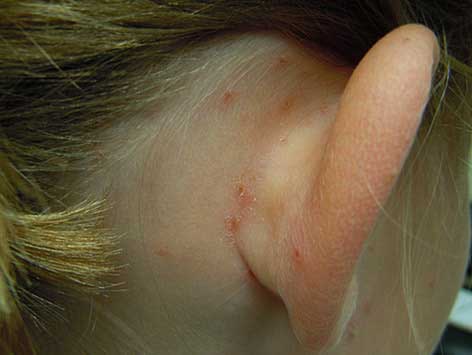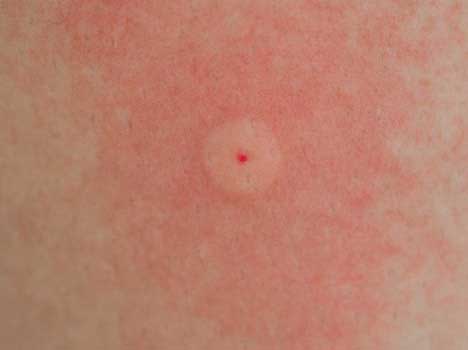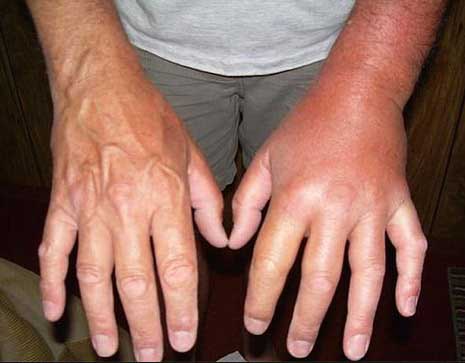
1. Lice

Bites from head lice can look very similar to flea bites. However, you’ll be able to distinguish them because they’re usually contained to the head, back of the neck, and behind the ears.
2. Bedbug

Bedbug bites look similar to mosquito bites, but they are usually redder, itchier, and appear in a zig-zag pattern. If you suspect you’ve been bitten by a bedbug, call an exterminator immediately. It’s the only way you’ll be able to rid these horrible pests from your home.
3.Tick

source: CropWatch /photo by Jim Kalisch,
Tick bites are unique because a red ring will appear around a dark red or sometimes black dot. It’s important to remove the tick properly (by drowning it with Vaseline or rubbing alcohol before using tweezers to pull it out). It’s not a bad idea to put the tick in an airtight container and take it to your doctor to have it tested for lyme disease and rocky mountain spotted fever.
4. Wasp

A wasp sting will have the appearance of a mosquito bite, but there will be a noticeable mark in the center of the bite. These bites can be a combination of itchy and painful, and the area will often turn red and become swollen.
5. Hornet

6.Bee

Although honey bees don’t sting as often as wasps or hornets, they do happen. You’ll be able to easily recognize a bee sting because they leave their stinger in the skin the second they sting. Remove the stinger with tweezers and clean the area with a disinfectant if you notice you have a bite.
7. Red Ant

Red ant bites tend to look a lot like flea bites, but there’s one main difference. While flea bites are immediately itchy, red ant (or fire ant) bites are instantly painful.
8. Spider

Although spider bites differ based on the type of spider, they are generally hard, red, and can be a combination of itchy and painful. In some cases, you may even be able to see two tiny puncture marks where the spider bit. Click here to learn more about the different types of spider bites and when you should seek medical attention for one.